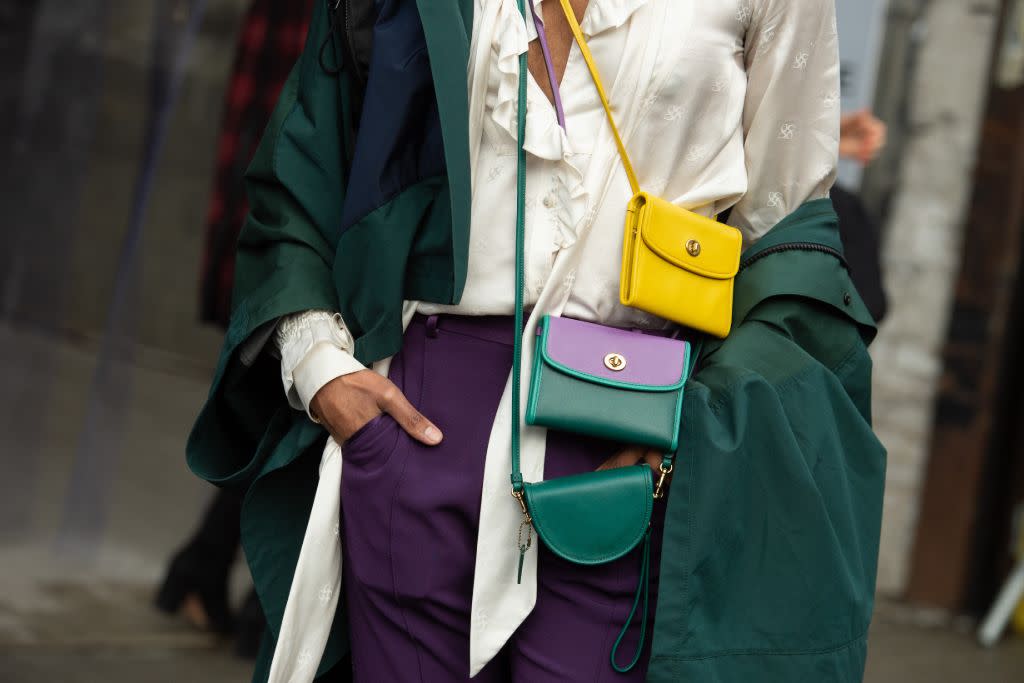Tapestry’s Senior Director of ESG Explains the Company’s Holistic Approach to Sustainability

When it comes to sustainability, Tapestry takes a broad approach across all three of its brands.
The New York City-based parent company of Coach, Kate Spade and Stuart Weitzman announced in September a goal to achieve net-zero value chain greenhouse gas emissions by 2050 by signing the Science Based Targets initiative (SBTi) Business Ambition for 1.5°C pledge.
More from Footwear News
Coach Celebrates Pride Month With Rainbow Sneakers, Slides, Sandals & More
Reformation Launches First Sneaker and It's Completely Recyclable
Tapestry has also outlined a series of targets for 2025, which include procuring 90% of its leather from tanneries highly rated for their environmental practices, achieving 95% traceability and mapping of its raw materials, having 75% of recycled content in its packaging, and seeing a 25% reduction in corporate waste in North America.
The company also committed to procuring 100% renewable electricity in its stores, offices, and fulfillment centers and pledged $25 million to establish the Tapestry Foundation, which will be matched with an equal contribution from the Coach Foundation to oversee certain responsibilities related to social and environmental goals.
When it comes to hitting these targets, Tapestry is taking a broad, holistic approach to include all three of its brands. In a Wednesday session at Sourcing Journal’s Sustainability Summit, Tapestry’s senior director of ESG and sustainability Logan Duran explained how each Tapestry brand approaches sustainability in a different way. While all brands focus on broad areas across the supply chain such as sourcing environmentally preferred materials, it is up to each brand to figure out the best strategy to carry out these commitments and effectively communicate these initiatives to their unique consumers.
“[We] set the table for the brands to basically come in and say, this is going to speak to our customers and we’re going to really lean in on this area,” Duran said.
When it comes to Kate Spade, Duran said that finding preferred materials is the main focus for the brand right now. As such, the brand quietly changed its linings to be made from recycled polyester a few years ago.
For Coach, the major initiative is its New Jersey repair center, which lengthens the lifespan of a product by fixing broken items. Over the last three years, Coach has repaired over 166,000 products in this center, Duran said.
“Coach is really leaning into this idea of crafted to last,” Duran said. “We make long lasting durable products and they’re really leaning on this idea of circularity as repair but also take-back and recommerce.”
In addition to its goal to achieve 95% traceability of raw materials, Tapestry is also exploring alternative, sustainable materials, such as fake leather. The challenge is to ensure that these materials continue to perform well and meet consumer expectations.
“We have a really aggressive material development team and we’re looking at and have created a preferred material strategy internally that is going after all those opportunities for innovation,” Duran said.
The commitment to achieve net zero has gained particular traction in the fashion and footwear industries over the last year. Running brand Brooks said last June that it plans to achieve net zero carbon emissions by 2040. In July, Crocs laid out a similar goal to become a net-zero company by 2030. And many athletic brands, including Nike and Adidas, have set a target date of 2050.
Best of Footwear News
Sign up for FN's Newsletter. For the latest news, follow us on Facebook, Twitter, and Instagram.

